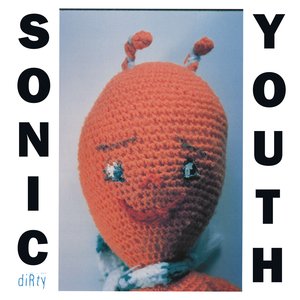Published on Dec 31, 1998
Ever since I took on this project for New Year’s Eve, I’ve been
discovering in the Pierce Archives many records, tapes and CDs that
I bought for no specific reason. Sometimes, I didn’t know the group
– hell, sometimes, I didn’t like the group – yet here, collecting
dust, are the purchases that I can no longer explain.
Exhibit “S”: Sonic Youth, whose work I was first exposed to in
college radio via the single “Kool Thing”. And after my first
taste, I decided I wasn’t particularly fond of Thurston Moore and
crew. Yet, while digging up some choice nuggets for this project,
there sat their 1992 album
Dirty – whatever made me decide to buy this in the first
place?
It’s probably been a good five years since I last listened to
this tape, but the time away from it has helped to sharpen my
tastes towards what Sonic Youth have been trying to do with their
music. With producer Butch Vig behind the controls (the first time
Sonic Youth used an outside producer),
Dirty proves itself to be an interesting, if not a tad
confusing, listen.
While there is still quite a bit of ambient noise that makes up
Sonic Youth’s music, they now show they’re not afraid to craft a
tune with – egads! – chordal structure. (It sounds for the most
part like guitarists Lee Ranaldo and Moore aren’t doing as many
experimentations with alternate tunings – though there still are
some weird sounds on
Dirty.)
Tracks like “100%,” “Drunken Butterfly,” “Sugar Kane” and
“Shoot” all show quite a bit of musical maturity among Sonic Youth
(Ranaldo, Moore, bassist Kim Gordon and drummer Steve Shelley).
Admittedly, Sonic Youth’s style has to grow on the listener – and
it’s not always the easiest process to go through. But the effort
proves to be worth it in the end. Before you know it, you’ll be
enjoying tracks like “Orange Rolls, Angel’s Spit” and “On The
Strip,” even if you don’t quite grasp what these songs are supposed
to be about.
The only real difficulty with
Dirty is that you have to really be paying attention to the
track listing and what’s happening on the album; otherwise, it’s
real easy to get lost in this album. Once you lose your footing,
it’s real hard to figure out when you reach the track “Creme
Brulee” until the song ends and silence again overtakes the
room.
To the purists,
Dirty might be seen as a rejection of everything that Sonic
Youth had worked towards in the early part of their career. I would
respectfully disagree, and argue that the music, while different,
is a natural progression for the band. It’s not so much an
embracing of more conventional music than a discovery that their
tonal experimentation can fit into the structure of more
conventional alternative rock.
Dirty is an album that took six years for me to enjoy, but I
think now I’m more prone to picking up other Sonic Youth albums –
and this time, I’ll know why I’m buying them in the first
place.
